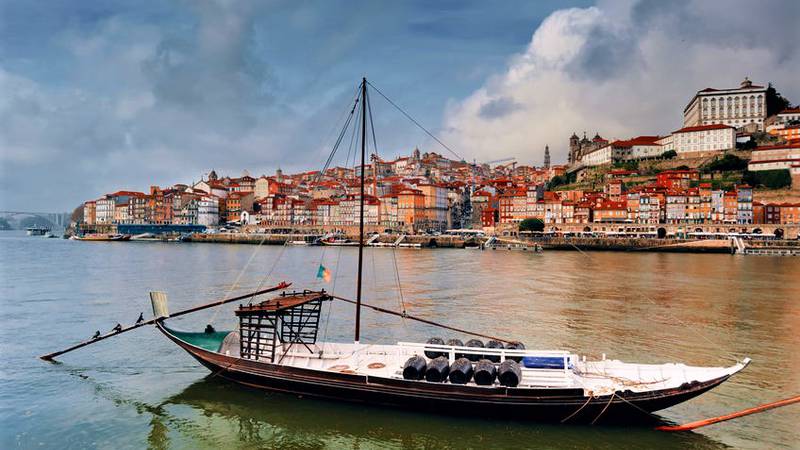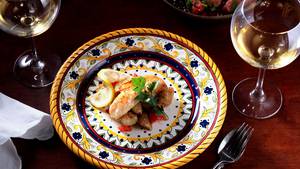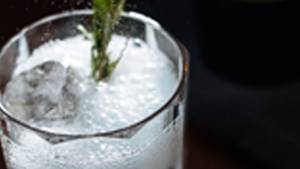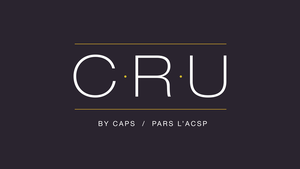The Port wine industry has been evolving over the past twenty years. With declines in the traditional volume movers, we asked three top producers what has been driving the business, where the industry is now, and what lies ahead for Portugal’s most celebrated wine region? Joining us for this conversation are Dirk Niepoort, the fifth generation of the Niepoort family and current head of his eponymous winery, Jorge Ramos likewise the fifth generation of winemakers for his family brand (Ramos Pinto), and Joao Rebelo, Sales Manager at Taylor Sales Manager - Port Wine Brands: Taylor's, Fonseca, Croft, Krohn at The Fladgate Partnership.
CRU: Over the last 20 years demand for Port has changed in terms of volumes but also the styles in demand. What trends have you witnessed specifically in the context of the restaurant trade in North America?
Dirk Niepoort: At Niepoort with the help of Martine Saunier, we have been putting Colheita Ports on the map, particularly in North American restaurants. Niepoort has been for a long time ‘the’ specialist in Colheitas and Martine has been a great ambassador. It is interesting to notice how the Colheita category has changed recently with the two major houses Taylors & Symington changing their “paradigm” from being totally against Colheitas to making a good job these days with their ‘single harvest tawnies’ and Colheitas.
Jorge Rosas: I feel that in general there has been an increase in premium Port sales, especially with aged tawny ports.
Joao Rebelo: We see volume Port being substituted by quality Port wine, and in particular growth in LBV as well as growth in Reserve Ruby (Fonseca Bin 27) amongst young consumers along with aged Tawny Ports.
CRU: While Tawny Ports, and in particular Colheita (single vintage Tawny Port), are experiencing a rise in popularity, are we also seeing a demographic shift via cocktail culture thanks in part to bartenders and mixologists using Port to make cocktails?
Dirk Niepoort: I think that Port does have a very good image in the bartenders, mixologist world and it is very positive for the Port industry. Funnily enough, I have the feeling that Sherry is getting out of their crisis because of the dry white wines made without fortification; particularly the ones aged under flor are becoming very popular. When the first Navazos Niepoort (www.niepoort-vinhos.com/en/projects/Navazos.html) was made in 2008 hardly anybody was doing anything like that and now there are more than 70 wines being made in this way. it is interesting to notice that the unfortified wines are bringing big attention to the Fino and Manzanilla Sherries.
Jorge Rosas: Let me start by saying that Port cocktails are great classics. They have existed since the 19th century. Porto Flip was first recorded in a book from 1962 called The Bartender’s Guide: How to Mix Drinks and it is a good example of a classic Port cocktail. And yes, there is an increasing interest in Port cocktails in North America. Many mixologists are now crafting modern Port cocktails, featuring multiple layers and complex flavour profile. On top of that, good mixologists like to use good quality products and one of the advantages in using Port in mixology is the fact that there is no need to use refined sugar (ex: from soft drinks) as Port has the natural residual sugar from grapes (glucose/fructose).
That said, Ramos Pinto is not actively investing in the promotion of Port cocktails as we own 250 hectares in the very steep slopes of the Douro. The house Quintas (estates) have very small yields so, production costs are extremely high and consequently, it is very difficult to compete in this price-orientated segment. Our wines are hand-crafted, estate-fruit wines and great on their own, with no need to mix with other products.
Joao Rebelo: Younger drinkers want quality, reasonable price, uncomplicated and a certain informality in the act of drinking. But they also value history, authenticity, and tradition. Our Port has all that. Our history is full of moments in which we had to reinvent ourselves in order to adapt. And so is the association with high-quality cocktails. Yes, it is for Port wine a perfect partnership.
We are seeing that Port is being used more and more in many cocktails. Port wines are a fantastic base for many and varied cocktails, as they are very balanced, versatile, and structured wines.
Canada may be a bit slower to embrace Port cocktails, but we see that the trend is happening; especially with our Fonseca Bin 27 Reserve Ruby and Croft Pink brands.
CRU: Dick Niepoort alluded to the dry table wine movement in Sherry. We have seen a dramatic rise in the popularity of Douro table wines over the last 20 years. We asked Dick Niepoort and Jorge Ramos, who both produce table wines what is the present and future of this category?
Dirk Niepoort: The Douro is big with 45, 000 hectares of vineyards ranging from 80 to 800 meters in elevation, with south, west, east and north facing vineyards. These amazing situations together make Douro one of the most interesting wine areas in the world and provide it an incredibly unique situation to be able to make some of the best-fortified wines in the world at the same time as some of the greatest red and white wines. In the last 30 years we have gone from about 1,000 pipes of Douro DOP to 70,000 pipes today. The potential of the Douro with all these amazing wines (fortified, along with red, white and rosé table wines) together with an organized tourism industry will guarantee a great future to the Douro.
Jorge Rosas: I have no doubts that the future of DOP Douro wines will be very bright. First of all, let me tell you that Ramos Pinto was amongst the first to make contemporary Douro (dry) wines and to export them to all four corners of the world. In fact, we were the very first ones to plan from scratch and produce this type of wines by planting vineyards with selected grape varieties (in the mid-1980s) and building a modern winery with the exclusive purpose of producing Douro wines (and not fortified wines).
For these reasons, we say in 1990 Ramos Pinto produced the first “modern” Douro wine, Duas Quintas. The success was extraordinary and today, 30 years later, almost all Port shippers also produce Douro DOC wines. Today, the Douro Valley can deliver world-class-(non-fortified)-wines, recognized by many international wine-writers, but I believe we are still in the very beginning of a new era. We still have much to learn, especially in terms of viticulture. In the early 1980s, Ramos Pinto selected the 5 best red grape varieties in the Douro Valley (which are the officially recommended varieties today), but there are more than 100 varieties (each with many different clones) that need to be studied. Also, it is interesting to see white and rosé Douro DOP wines already appearing in the Portuguese market. I foresee that even more of these wines will appear in the future, with more and more quality.
CRU: Critics and sommeliers generally agreed that Douro tables wines rank as some of the quality to price ratio wines in the wine world. We asked Dick Niepoort and Jorge Ramos to comment on the sustainability of the pricing, considering not only the low yielding nature of the Douro but influence of Beneficio system.
Dirk Niepoort: The Beneficio was a very well thought invention for Port. However, what is good for Port is not necessarily good for wines (many times actually just the opposite). this system is causing some unbalanced situations, including the prices of the grapes for the wines (versus Port). There will have to be some changes in the future but we have to go slowly on this matter…the Beneficio is not really correct for modern times but it still makes some sense.
Jorge Rosas: It is possible that the current Douro DOP wine pricing will remain stable in the short term, but I do not think it is sustainable at all in the mid and long-term. The Douro is a mountainous viticultural area with average yields of 32 hectolitres per hectare, which implies very high production costs.
Regarding the Beneficio, I believe it will disappear naturally and gradually when Douro wine sales will start to reach the level where demand for Douro grapes will be higher than the offer. For this to happen several variables must fall into place including continued sales growth of DOP Douro, Port sales eventually remain stable and the number of hectares planted in the valley remains stable, which has been the case in the last few years. If all this happens, we will see an increase in the price of Douro wines grapes, and consequently the Beneficio system won’t be necessary anymore.
CRU: As consumer demands for certain styles shift, what if anything is your winery doing to adapt?
Dirk Niepoort: I, and Niepoort, are not really known for adapting to consumer demands.
We are following our own taste and beliefs, so our wines tend to be much lighter and finer than most others. Our wines tend to have a lot less alcohol, higher acidity (natural) and are less woody. With the Port wines, we follow our style which is also kind of higher, fresher, less “prune-like” avoiding overripe grapes. On the fun side, we are also launching a Nat’Cool Ruby, called TRUDY.
Jorge Rosas: Over the last few years, we have been progressively reducing the alcohol and residual sugar in our Ports (within the minimum level, according to the IVDP parameters). But much more is yet to be launched soon…stay tuned.
Joao Rebelo: We have always been innovators. We were responsible the first extra dry White Port in 1934, the first Single Quinta Vintage Port in 1958, the LBV in 1970, the first Certified Organic Port (FONSECA Terra Prima) in 2006, and the first rosé port (Croft Pink) in 2008. Also, we were the first to commercialize a pre-phylloxera Port Wine (Scion) and we were the first Tawny port to have 100 points. Finally with introduction of Taylor Fladgate Single Harvest Port 6 years ago, we made exploring Tawny Port a progression and evolution versus a onetime experience.
CRU: Given the stylistic and demographic shifts our interviewees relayed to us, we asked them what their thoughts were in terms of integrating Port / Douro wines in the modern dining experience from start to finish?
Jorge Rosas: Port can be enjoyed from start to finish. Chilled dry White Ports such as our Ramos Pinto served as an aperitif, followed by a sweet White Port with foie gras. For the main course our Late Bottle Vintage with game. It’s especially good when you use the same wine to make a sauce. Then an aged Vintage Port such as our 1983 with Portuguese Serra (or Stilton) and finally a 20-Year-Old Tawny such as Quinta do Bom Retiro 20 Year Old with an orange cake. To complete the meal serve a 30 Year Old Tawny as a digestif. Of course, you can only serve small portions. Please keep in mind that Port is approximately 19. 5 per cent alcohol. Be responsible, drink in moderation.
Dirk Niepoort: You can integrate Port with the meal. Pepper steak with a green pepper sauce served with a young Vintage Port combines amazingly well as the sweetness of the pepper of the sauce balances the sweetness of the Port, making the Port taste more like a red wine. Of course, White Ports should be introduced as well as they are very good as an aperitif.
Joao Rebelo: Younger drinkers want quality, reasonable price, uncomplicated, and a certain informality in the act of drinking. But they also value history, authenticity, and tradition. Our Port has all that. Our history is full of moments in which we had to reinvent ourselves in order to adapt. And so is the association with high-quality cocktails. Yes, it is for Port wine a perfect partnership.
We are seeing that Port is being used more and more in many cocktails. Port wines are a fantastic base for many and varied cocktails, as they are very balanced, versatile, and structured wines. (Try pouring a fine Ruby or Tawny Port in a high ball glass filled with ice and you will be delighted with the smoothness and elegance of the drink.) That means the cocktail culture is embracing port, maybe a bit slower in Canada, but we see that the trend is happening. Excellent examples are our Fonseca Bin 27 Reserve Ruby. And with our Croft Pink.
To integrate Port Wine in a restaurant program obviously depends on the food served. Canada is a market with tradition in the consumption of Port Wine. The most consensual is the LBV which will therefore be essential to include. You should also add the Aged Tawnies 10 Years (and maybe 20 Years) as it has an affordable price that allows customers to try. I also suggest including a White Port for an aperitif before the meal. They are ready to drink when bottled and no decanting is required. At the same time, they will remain in good condition for a couple of weeks after the bottle is first opened.







